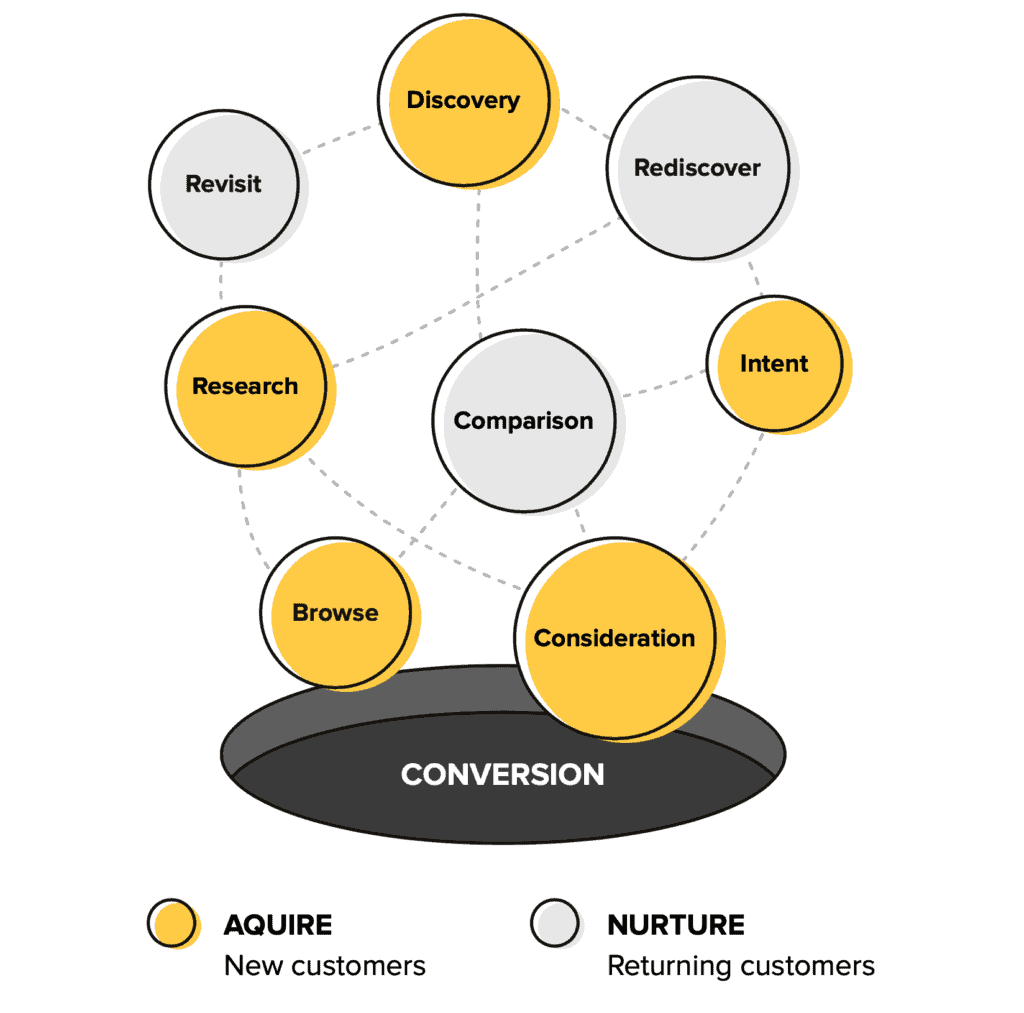As social distancing becomes the new normal and plenty of bricks and mortar stores shut their doors temporarily, having an effective online presence is more critical than ever. Acting as a company’s digital face, websites play a critical role throughout the entire user journey – from awareness all the way through to post-purchase engagement.

All website elements have a role in shaping the user experience, but copy is particularly critical. Copy on your website can influence whether users will continue engaging with the website and, ultimately, whether they’ll convert. Even if you’ve done everything right and designed your site based on extensive UX research, poor copywriting can drive your customers away at the critical moment.
But what exactly is it about UX copy that might put your customers off making a purchase, and how can you fix it? Read on to learn the answers to both these questions below.
1. Landing page copy fails to align with user expectations
In terms of UX problems, there’s nothing worse than a landing page that doesn’t deliver what users expect it to. This issue isn’t limited to blog content: We’ve seen it occur across different types of pages, from homepages to category and product pages. In some cases, this expectation is set by meta information on the search engine results page (SERP), and in others it’s set by the page title.
Good landing page copy needs to closely align with the pre-click SERP copy, including the meta description that enticed the user to click in the first place. Within 5 seconds of arriving on the page, users need to be able to remember the brand, identify who the site is for, and determine what the main offering is.
Top TipEnsuring your copy uses a consistent tone of voice that aligns with your brand’s identity can help keep users on your site and encourage them to convert.
2. Your content isn’t appealing to users
Once you’ve captured the user’s attention by aligning the content with their search intention, it’s time to review your copy to ensure it’s appealing enough to stop users from bouncing. To do this, bear in mind the ‘The 15 Second Rule’. In other words, remember that you have just 15 seconds to generate interest before a user will leave your site.
To check if your site meets the 15 Second Rule, ask yourself:
- Does the copy clearly explain how the product or service can address the user’s particular needs? What are the expected outcomes?
- Have you “closed the gap” between what the brand can offer and what the user wants (consciously or subconsciously)?
- Have you described your product or service vividly enough that it can appeal to users?
- Does your copy help minimise the perceived risk of purchases such as high product cost, product quality, effectiveness, etc.?
If you haven’t answered “yes” to all of the above questions, it’s time for some thorough, strategic content planning. Developing a content strategy can help put the right content in the right places to ensure that the user converts at the ‘moment of truth’. While copy doesn’t have to be lengthy, thin copy (less than three hundred words) can make it extremely challenging to address all of the user’s needs and eliminate their pain points.
Top TipWherever possible, arrange your copy in an easy-to-digest format with bullet points and subheadings, and use visual cues where appropriate.
3. Your copy fails to highlight the offer’s unique value proposition
Besides solving the user’s problems, marketers are tasked with looking for ways to highlight what makes your product or service unique amongst an increasingly competitive market. Obviously, your users don’t need another brand that’s just like everyone else.
To set yourself apart from the competition, your copy needs to explain the advantages of your brand over existing products. Choose your words carefully to describe the offer, and don’t repeat what your competitors have already said.
Instead, focus your efforts on addressing the concerns of prospective users by discussing how the offered features can solve their problems. Other creative assets, like demonstration videos and previews, can also help you clearly outline the advantages you have to offer.
4. Your copy fails to reinforce trust & brand credibility
Establishing your credibility as a brand users can trust is another critical role of site copy. Today, users aren’t asking “What are you saying?” so much as “I hear you, but why should I trust you?”. Experienced shoppers are well aware that reviews aren’t always reliable these days and constantly look for social proof from other sources. Where relevant, your copy should therefore feature:
- Third-party review ratings from platforms such as ProductReview and Trustpilot
- Testimonials from verified customers
- Endorsements from reputable media
These will in turn allow you to minimise the perceived risk in the user’s mindset, motivating them to convert.
More importantly, trust can be built gradually as you establish yourself as a thought leader with authority. Over time, users will hear what you say – and begin to believe it.
Will that happen over night? No.
Will that require a long-term content strategy? Yes.
Again, this emphasises the importance of content – particularly a well-planned content calendar within your marketing team and organisation.
Done correctly, content marketing will ensure users come to you for opinions and put you in their ‘evoked’ set, which in the marketing world means ‘preferred brands’ to consider first before anyone else.
5. Your copy fails to motivate users to take the next step
No matter what page users visit on your site, the next logical action to take from this page needs to be clear. Whether this action is to explore the product range, fill out a form, download content, or initiate a call, every page needs to motivate the user to act. In marketing speak, this is called a ‘call to action’ (CTA), and compelling CTAs are worth their weight in gold.
What constitutes a compelling CTA, you ask? Here are a few tips:
- The CTA copy concentrates on delivering the outcome users desire
- The CTA copy clearly says what the user will get once they convert
- The CTA link or button is featured prominently above the fold
- The CTA is presented with a sense of urgency to act (limited offer or other time-sensitive incentive)
Top TipWhen writing a CTA, keep it short and sharp and ensure that you hyperlink to any relevant pages that enable the user to take action.
Boost conversion rates by cutting bad copy
Don’t let poor site copy be the obstacle on your user’s journey to convert. Many of the conversion killers in our list above can be resolved right away without extensive resources from your marketing team and can make a huge difference to your conversion rates.
If you’re starting from scratch or revamping your website, bear the above advice in mind as you consider what messaging to highlight on your homepage, and which unique value proposition to promote over others. In all cases, remember that good copy starts with understanding user needs and putting these first above all things.
Need someone to audit your site’s copy and overall user experience? Get in touch with us today to see how we can help!

